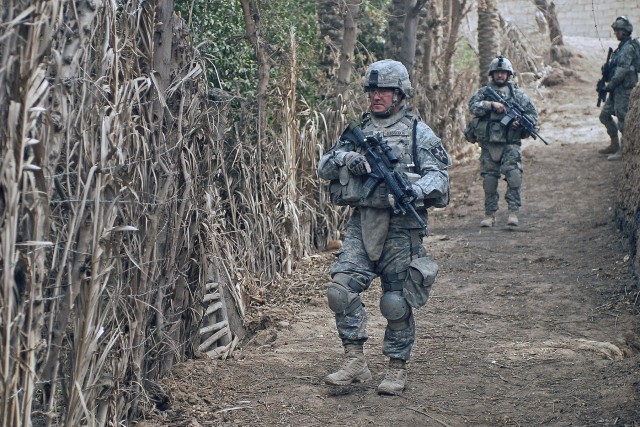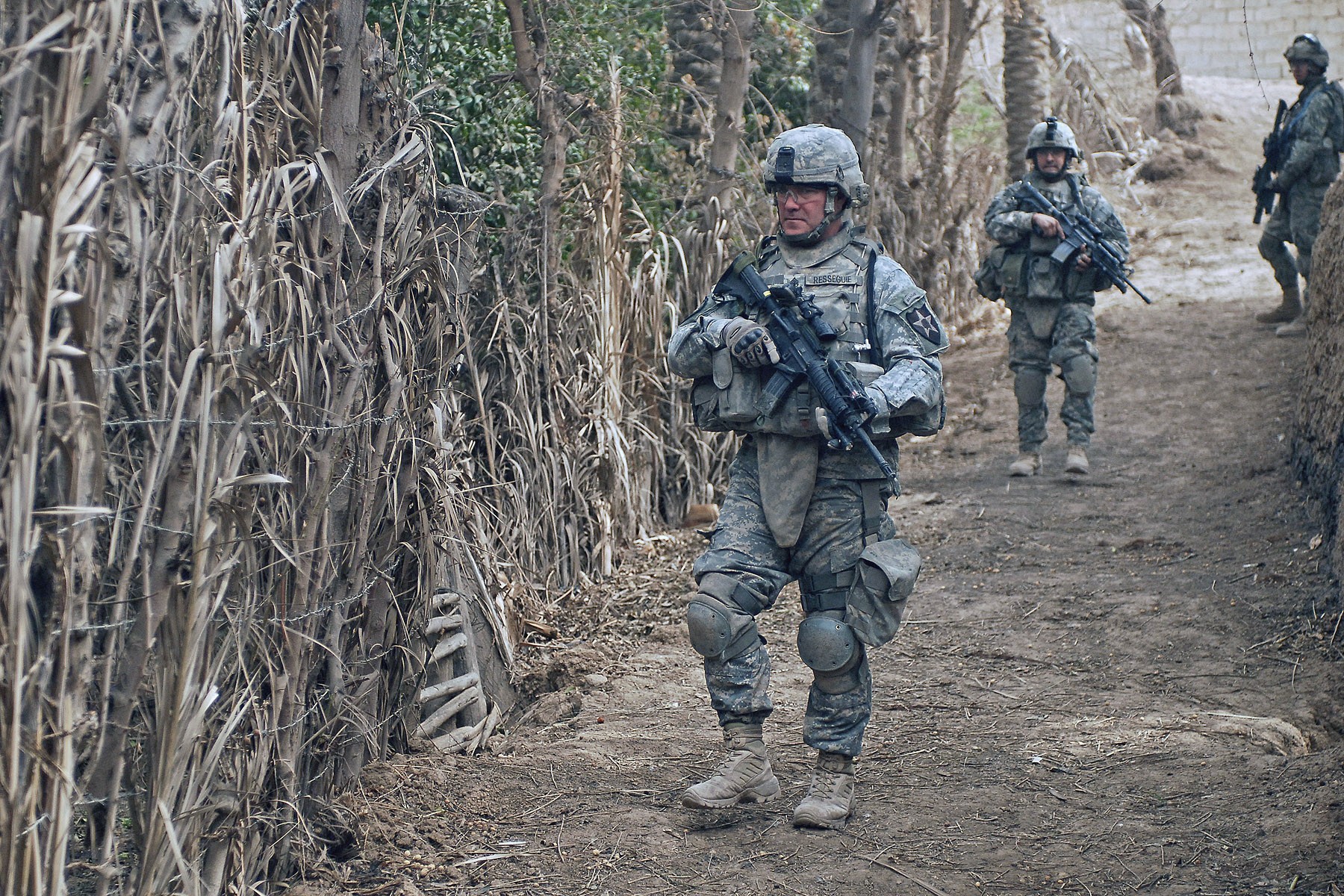BAGHDAD - When 2nd Squadron, 1st Cavalry Regiment, arrived at Joint Security Station Tarmiyah in January 2010, there were still empty shell casings scattered on the rooftops and in the guard towers; a misleading sign as to what they would encounter over the next year.
As the third and final 4th Brigade, 2nd Infantry Division, unit to serve in Tarmiyah during Operation Iraqi Freedom, the squadron had the honor of transferring authority of JSS Tarmiyah to the Iraqi security forces, along with a sense of stability that hasn't been seen in the area in many years.
JSS Tarmiyah was established at the beginning of the coalition offensive known as "The Surge" when U.S. forces strategically placed security stations in areas that were under the control of insurgents. This was done to help connect U.S. forces with the local people and root out the insurgency. Tarmiyah was considered one of the hubs of the insurgency and the last stopping point on the northern smuggling route where insurgents brought weapons and foreign fighters into the capital city.
During the brigade's first deployment from 2007 to 2008, Soldiers with 4th Battalion, 9th Infantry Regiment, inherited JSS Tarmiyah from 2nd Battalion, 8th Cavalry Regiment. However, it was not where 2-8 Cav. had originally set up. Soldiers relocated the outpost after insurgents had driven multiple vehicle-born improvised explosive devices into the original structure and then tried to overrun it Feb. 19, 2007.
Outnumbering the U.S. Soldiers, they killed two and wounded another 28 of the 36 surviving Soldiers on that day.
Just seven months after the attack, 4-9 Inf., with the help of 2nd Battalion, 23rd Infantry Regiment, swept through the town during Operation Raider Riviera. Clearing the area of insurgents was to be the beginning of the "clear, hold, build" strategy that became instrumental to the success of the surge and put Iraq on the path toward long-term security.
It was a dangerous time in 2007. When Soldiers went out on missions, they kept a vigilant watch for the "Tarmiyah sniper."
Staff Sgt. Thomas Martin was a squad leader with C Company, 4-9 Inf., and said he remembers one time when his platoon had a run-in with the sniper.
"We were actually pulling (security) on the JSS. I was in the TOC running the radios and then we received fire from the mosque, which was ... across from us," said Martin, who now serves as a liaison for his battalion in the brigade tactical operations center at Camp Liberty.
The company commander called for helicopter gunship support, while another squad went out to investigate, Martin said. During the engagement, the squad continued to receive enemy fire, which resulted in the death of a U.S. Soldier. Throughout their time at Tarmiyah, the unit continued to suffer casualties from the phantom sniper, leaving the men wary whenever they went out on missions.
"Every platoon was very aware of his presence and if you dismounted, you took precautions," said Martin.
Years later, 2-1 Cav. Soldiers could walk past the mosque that was formerly known as a sniper's hideout.
The hard work and sacrifices made by 4th Bde., 2nd Inf. Div., in 2007 and 2008 allowed for squadron to face a less hostile environment in 2009 and 2010.
"(We) made a very good name for ourselves there," said Martin. "By the time we left, we were able to shop at some of the local shops and feel safe about it.
"All in all, the general populace started to embrace us and see that we weren't there to hurt them," he added.
Martin remembered the time a local mother fed him and his squad after they had commandeered her home for a mission.
The lasting effects of the security situation in Tarmiyah he and the other members of his unit have recently enjoyed didn't come without a cost.
By the end of the earlier tour, 4th Bde., 2nd Inf. Div., lost 54 Soldiers. For some Soldiers still with the brigade, returning to these hard-fought areas for another deployment was an emotional experience, but one that has also offered healing.
"There's always that need to feel some sort of closure when you go through something like we did for 15 months the last time we were here," said Master Sgt. Jonny Resseguie, as he recalled the tough combat he and his men encountered in the Rashid area, Dora market area, and in Muqdadiyah.
"It's nice to go back and see it doing better and see (this) is the ground that they fought for, this is the ground that they died on, and this is where it's at now," he said. "That was my chance to get a little closure."
Pfc. Kimberly Hackbarth is assigned to 4th Stryker Brigade Combat Team, 2nd Infantry Division. This story appeared in Joint Base Lewis-McChord's weekly newspaper, the Northwest Guardian.


Social Sharing